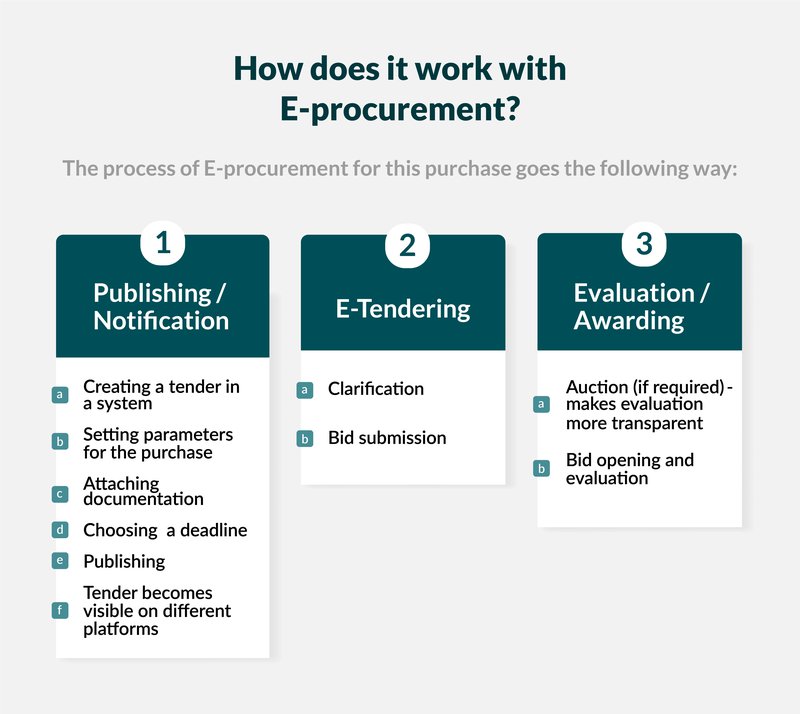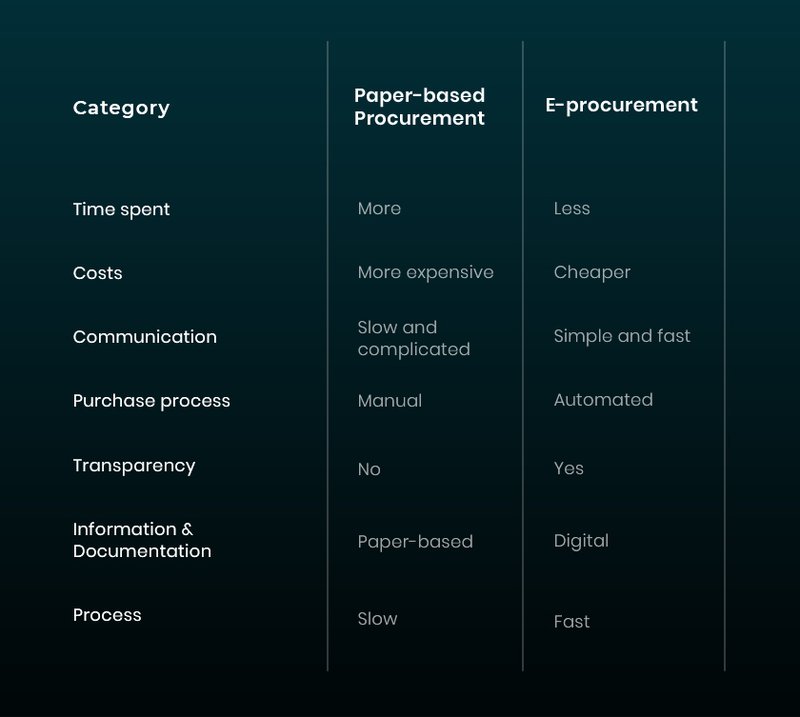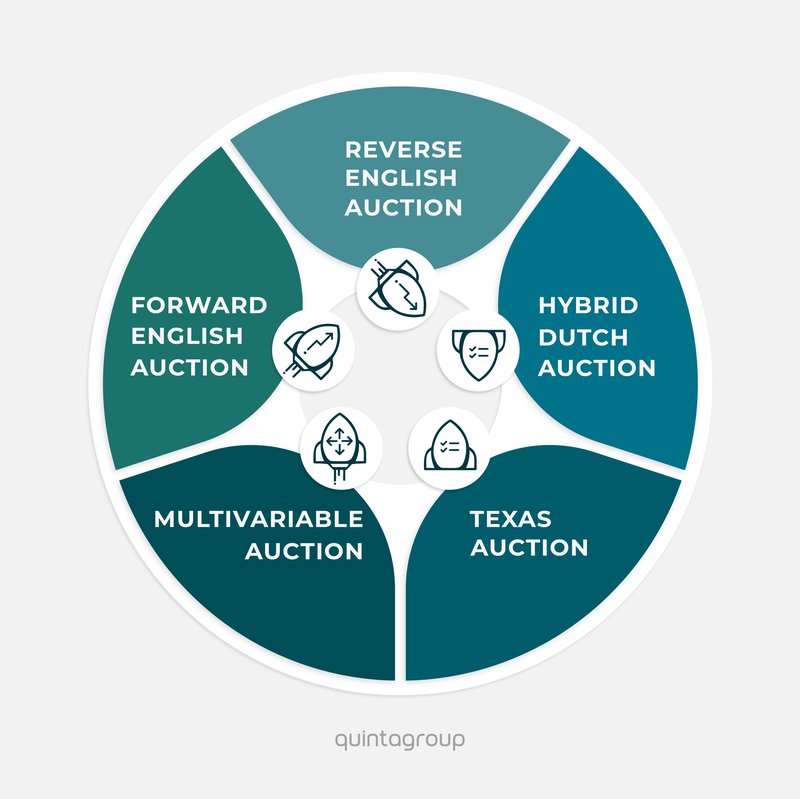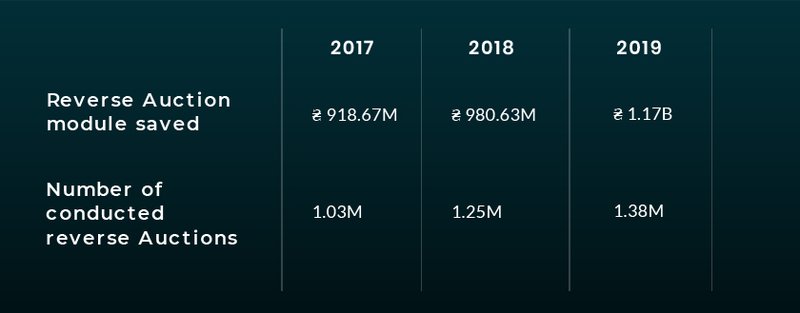Auctions in E-procurement vs Paper-Based Procurement
- valeriia
- July 13, 2020

As technology is constantly developing and the world is changing, so is the procurement. Nowadays procurement became digitized, and so did auctions. Some countries and even companies switched to e-procurement, some didn’t. As a result, some gain more benefits than others. In this article, we will show you how beneficial it is to use e-procurement auction software rather than traditional paper-based auctions.
E-procurement vs Paper-Based Procurement
Before talking about auctions specifically, let’s see the general difference between e-procurement and traditional paper-based procurement. The procurement can be divided here into 2 types:
- Public procurement - Government is the Buyer, Business is a Supplier;
- Business-to-Business Procurement - One Business is the Buyer, another Business is a Supplier.
Let’s look at the example from public procurement. The Ministry of Education wants to purchase paper from a paper-manufacturing company. Hence, the Ministry of Education is a Buyer and the company is a Supplier. And for the example of business-to-business procurement, company A wants to purchase computer monitors from company B. Therefore, company A is a Buyer, and company B is a Supplier. Now let’s see how both public and business-to-business procurement work in 2 versions: Paper-Based Procurement and E-procurement.
How does it work with Paper-Based Procurement?
A Paper-Based Procurement involves a classic tender creation and publication through newspapers, newsletters, etc. with a lot of paperwork that needs to be done for the invitation of bidders, submission of tender proposals, and their evaluation. It will take a tremendous amount of time and effort from both Buyer and Supplier. Paper-Based Procurement is filled with disadvantages connecting to:
- Administrative afflicts
- High prices for both sides of the procurement
- Insufficient management information or its complete absence
- Low productivity
- Weak management of contract realization
- Deficiency of public accountability and transparency
- Usage of plain procedures only to avoid possible errors
Paper-Based procurement is a favorable environment for bribery. The prices in this type of procurement may raise a whole lot higher than they should be because of corruption. But why does corruption appear in procurement in the first place? People might try to bribe others to get rid of the competition or to reshape tender rules to favor one bidder. Sometimes participants even violate the competitive process, create collusion, or deceive partners during delivery. Let’s take the Ukrainian railway company “Ukrzaliznytsia” as an example. They buy coal from company N without letting other suppliers offer lower prices, because of the corruption. In E-procurement, the purchase process will be open to everybody and transparent. And the company can pay a fine of 34,000-170,000 UAH for procurement without the use of statutory procedures
How does it work with E-procurement?
Let's see how the process of E-procurement for this purchase goes.

Why is E-procurement better?
In public procurement
For Buyer:
- Governance (Transparency, Accountability, Corruption Control, Rule of Law)
- Effectiveness of Government
- Development of Markets (Competitiveness, Business Development, Regional Development)
For Supplier:
- Ability to sell goods and services to a government customer → reputation
- Market openness
- Simplicity and the absence of bureaucracy (Supplier just needs to register correctly in the system and submit their proposal)
In business-to-business procurement
For Buyer:
- Ability to announce the need to purchase quickly and actualize it
- Ability to choose the best product or service for the lowest price
For Supplier:
- Smooth selling
- No bureaucracy
- Business development
Now let’s see these two types of procurement in comparison in a table.

As we see, E-procurement has got a great number of benefits here, which allows the procurement process to be more effective. Next, let’s talk about auctions as a great choice for your projects.
Online auctions in E-procurement
Now that we saw the difference between Traditional Procurement and E-procurement, let’s look specifically at the auction used in E-procurement, and find out how Online Reverse auctions improve government procurement.
Online auctions are quite beneficial for those, who want to make their procurement faster, easier, more efficient, and more transparent. Besides, people save a lot of money while using online auctions too and choose them because of their convenience. Who doesn’t want to stay at home while selling or purchasing instead of wasting time at traditional auctions?
In the image below you can see 5 types of auctions that are widely used in E-procurement.

How Online Reverse Auctions improve government procurement
In the Prozorro e-procurement system government, federal agencies, and municipalities buy from businesses, and therefore an Online Reverse Auction is used for the government to buy products or services at the lowest prices possible. This type of auction became the best solution for government buyers because they are constantly under pressure to do more work with fewer staff and resources. Governments want to fight corruption, that’s why the Prozorro project ensures full transparency of the procurement process. In addition to that, the auction ensures bidder anonymity and provides real-time pricing feedback. As mentioned above, the government can save a lot of money and invest it in other projects because of the price negotiations in Online Reverse Auctions. These auctions also reduce time spent on procurement by setting a defined start and end of the event and reduce the complexity of buyer-supplier negotiations. Online Reverse Auctions in Prozorro boost collaboration as well by allowing multiple buyers to work together on a purchase to increase the general efficiency of the purchase. This works for suppliers too as a supplier is able to question and reply faster to specifications and negotiations.
Now let’s see the real-time statistics of how Online Reverse Auctions from Prozorro improved government procurement through 2017-2019 and keep improving it.

More specific information about government e-procurement in Ukraine, as an example, you can find in bi.prozorro.org. As you can see, Reverse Auctions in government e-procurement are quite profitable. Don’t hesitate and become a part of a better procurement with Prozorro and Prozorro.Sale. Contact us if you have any questions.